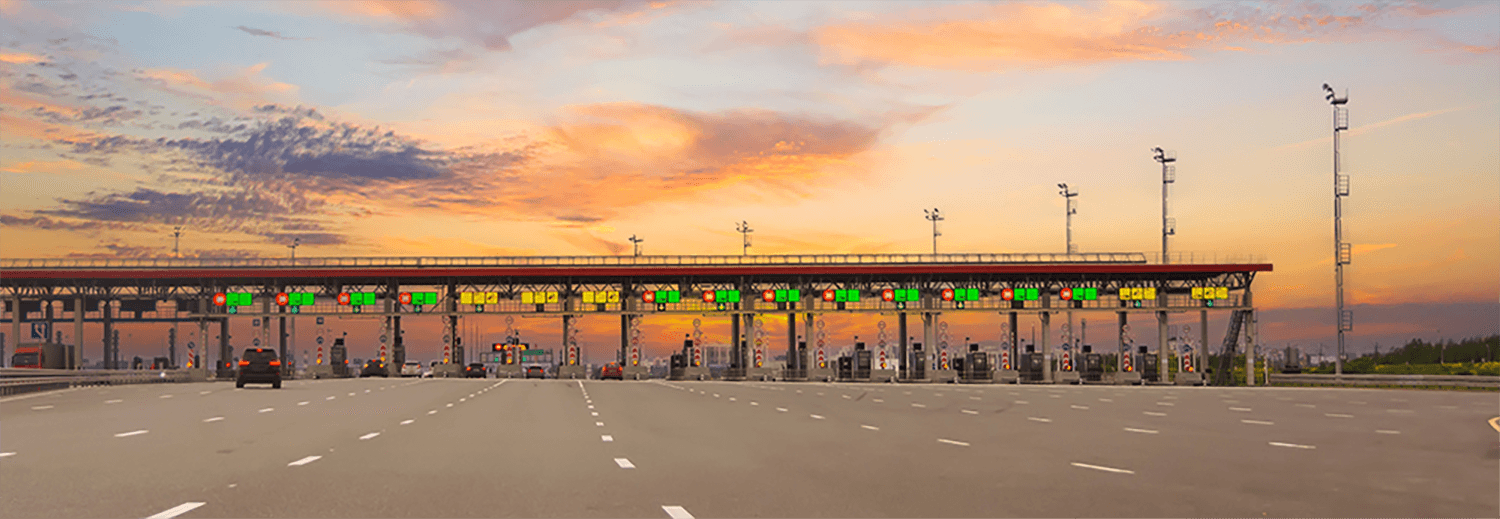Road toll systems (tolling systems) - essence and challenges
Industry publications
Industry publications

As specialists who took part in the construction of the road toll system in Poland (e-TOLL), we would like to share our experiences of building a toll system. We will not reveal technical details, but we would like to point out the environment in which such systems operate and the challenges they face. We hope that the topic will be interesting and that we will provide readers with concrete information. Some simplifications have been deliberately adopted to provide knowledge for those not involved in the industry.
Roads are built because infrastructure translates into economic success for a country. However, this infrastructure costs money: the construction of 1km of motorway in Poland is, depending on the data source, between 29 and 41 million PLN. PLN. The General Directorate for National Roads and Motorways (GDDKiA) reports that the cost of maintaining motorways and motorways in 2023 was nearly PLN 912 million. It makes sense, therefore, to strive to ensure that greater costs are borne by those who use the roads most.
We can only travel free of charge in eleven European countries, provided that we are travelling by car. If you travel to countries such as Belgium, Cyprus, Denmark, Finland, the Netherlands, Lithuania, Norway, Luxembourg, Sweden and the United Kingdom, you will be able to use the motorways free of charge. The situation is different for trucks and tractors. There are no exceptions here.
In Poland, tolling is regulated by the Act on Public Roads (when tolling of passenger cars was in operation - this was also the Act on Toll Motorways and the National Road Fund). Article 13h(1) - states that an electronic toll shall be collected for the passage of heavy goods vehicles (over 3.5t GVW) on national roads. Article 13h(2) - specifies that the electronic toll is charged for each kilometre travelled, based on the recording equipment.
Heavy vehicles therefore pay to drive on selected motorways, expressways and national roads. The exact grid of toll roads is available at https://etoll.gov.pl/system-e-toll/siec-drog-platnych/.
From 1 December 2023, the road toll is calculated according to the length of the route travelled by the vehicle on the toll roads, as well as the toll rate per kilometre, which includes costs related to the CO₂ emissions caused, air pollution, noise burden and infrastructure costs.
The lowest road toll is currently around PLN 0.24 per kilometre in Poland. For comparison: in Germany it is approximately PLN 1.46, and German motorways are considered to be the best in Europe.
Light vehicles (passenger vehicles) - pay only tolls on selected motorway sections (concession sections, as the sections maintained by GDDKIA are free of charge for light vehicles). For light vehicles, on motorways, the amount of tolls is determined on the basis of agreements concluded with individual concessionaires.
And how is toll collection itself carried out? Of course, it is not possible to place gates (known from motorways) on all toll sections. Tolling is therefore carried out on the basis of data from special devices (the so-called OBU - OnBoard Unit), which transmit the current position and, on this basis, tolls are calculated and collected from prepaid accounts. There are other technologies as well, but about that in a separate article.
There is also a control infrastructure on the roads, stationary and mobile, which is used to check whether all users who are obliged to pay tolls have actually paid them. If not, the tolls can be legally enforced.
Should tolls increase? The higher the tolls (higher toll amount or more toll roads), the more money is left in the budget for public activities. On the other hand - tolls are a cost in a transport industry already operating on minimal margins. So let's leave this difficult question to economists and politicians.